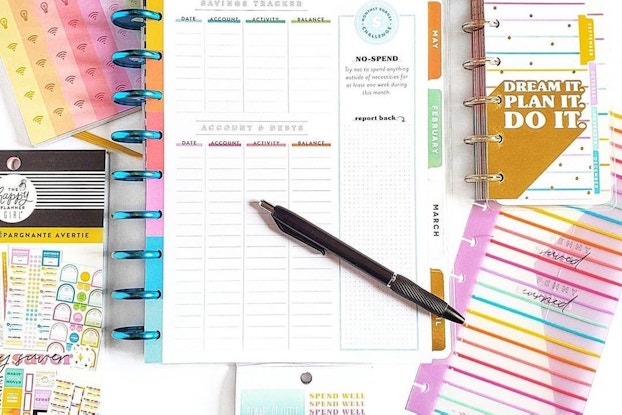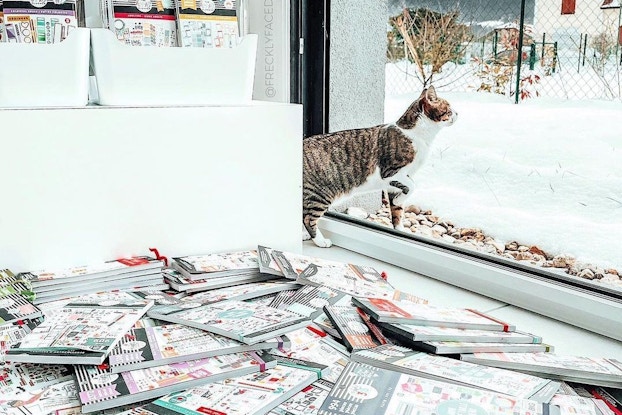
Why it matters:
- Consumers spent more time engaging with influencers on social platforms during the COVID-19 quarantine.
- A majority (61%) are placing their trust in product recommendations from a friend, family member or influencer.
- 40% of consumers bought something after engaging on Twitter, YouTube or Instagram.
What recently sold out as fast as a 12-pack of toilet paper during the height of the pandemic? The first editions of The Happy Planner Disney-themed planners and journals from the virtual and physical shelves at Walmart, JoAnn and Michaels.
The reason, according to Katie Henry, chief marketing officer of The Happy Planner stationery company, was “their squad.”
In this case, the Disney princess designs with encouraging titles like “Say yes to adventure” and “Magic” were featured ahead of their release in stores on the Instagram feeds of 23 individuals who regularly share how they cleverly use the company’s journals, stickers and assorted other items in their everyday life. And that created a groundswell of interest to buy.
More commonly known as influencer marketing in industry parlance, it’s when a company like The Happy Planner sponsors photos, videos and commentary created by the consumer—not the company that’s trying to sell you something. Against the backdrop of the pandemic, consumers are increasingly eschewing brands' messages for a thumbs-up from an influencer. [Read about how to find an influencer here.]
A survey by Matter Communications, a creative services and digital marketing agency, found that consumers spent more time engaging with influencers on social platforms during COVID-19 quarantine, and a majority (61%) are placing their trust in recommendations from a friend, family member or influencer. In contrast, click-through rates on banner ads on the web are .06%, according to Google.

Building cred with a big swath of the right customers
Take Nike, for example. For its Air VaporMax shoes, the company collaborated with YouTube influencer duo Dan Markham and his teenage son Lincoln for one of their “What’s Inside” videos. The two built a massive following by cutting open and exploring the interiors of a variety of products and spaces from baseballs to bank vaults. For the Nike campaign, they created seven videos in total, including displaying the various parts of the new tech that went into the shoes—one of which has garnered over seven million views.
Meanwhile, Tom’s of Maine took to Instagram to ensure that its all-natural personal care products were in front of the right consumers. By offering its products and brand-related rewards to “micro-influencers” — those with fewer than 100,000 followers—Tom’s got in front of a massive number of new consumers.
Word of mouth on digital steroids
There are myriad other examples of brands capitalizing on this trend from the likes of BMW to e.l.f. cosmetics. But the motivation is simple: to create a more authentic form of advertising that will resonate with a savvy consumer.
“We don't trust corporations. We don't trust politicians. And the more something seems built [by a brand] the less it feels that it should be trusted,” explained Tim Kalinowski, the founder and CEO of Lore, a multi-disciplinary, contextual brand storytelling agency. Plenty of marketing industry research supports this, particularly over the past year as the pandemic shifted consumer behavior away from stores and towards e-commerce and further away from traditional digital advertising.
The concept of influencer marketing in its current form is relatively new, but historically, it’s been around for some time. In the 1930s, Coca-Cola co-opted Santa Claus to shill the soft drink as “the pause that refreshes.” Fast forward to Old Spice’s now-iconic 2010 campaign featuring former NFL star Isaiah Mustafa as the “Man Your Man Could Smell Like,” which amassed six million YouTube views in its first week.
A case study found that this celebrity influencer campaign garnered Old Spice parent company Procter & Gamble a 125% increase in sales year-over-year as it competed with Unilever’s Axe brand.
More people were journaling and doing memory keeping at home. So we have [developed new] things that really go back to that and speak to what the community was doing and how they were using our products.Katie Henry, chief marketing officer, The Happy Planner
How a thumbs-up from everyday folks helped The Happy Planner stationery sell out
And while a slew of celebrities from the Kardashians and soccer star Cristiano Rinaldo to indie recording artist Billie Eilish have served brands as influencers, in the search for authenticity and truth, consumers are pivoting from A-lister recommendations on social platforms and moving toward more relatable everyday people. The Matter survey found that only 17% of those polled said they prefer celebrity influencers over experts or well-known non-celebrity individuals, like authors or public figures. [More here on tapping industry-specific influencers.]
“I want to know how this other person is using [a product],” Kalinowski said, “And do I want to do that? Does it fit in my life that way?”
According to the Digital Marketing Institute, nearly half (49%) of consumers depend on influencer recommendations, and 40% bought something after engaging on Twitter, YouTube or Instagram.
Happy Planner, for its part, counts teachers, moms, high school and college students, entrepreneurs, nurses and more among its influencer squad, Henry told CO—. Some of them, like Brandi Milloy, have become well-known on Instagram for lifestyle content. One of her posts features a Happy Planner journal whose cover proclaims, “You are capable of amazing things,” and Milloy’s caption is laden with tips on how to create a vision board with the help of the brand’s products.
Henry noted that its squad is not paid, “but they do receive hundreds of free samples each year and they do make a commission on any sales they send to our website,” and their contributions have been invaluable during this past year. [See these three must-know tips on influencer marketing.]

The return of investment of authenticity
The Happy Planner used to do regular photo shoots of their own that would typically bring together eight to 10 stylists and photographers in a studio. With social-distancing requirements in place, Henry said The Happy Planner instead leaned on its squad, particularly in the run-up to the much-anticipated release of its Disney-themed products. Photos of regular people using the planners, stickers and stationery from the Disney collaboration “really got the community excited,” said Henry.
So excited that its retail partners sold out of everything in a flash. Indeed, 1,200 Jo-Ann Stores “sold out in less than a day,” Henry said, “Walmart sold out in eight minutes.” For The Happy Planner, this kind of sell through is key because many of the journals are dated and therefore don’t have an indefinite shelf life—which also becomes a win for the retailer as they don’t have to mark down excess inventory.
Although Kalinowski admitted that it’s sometimes hard to put a firm number on the return on investment that this type of marketing can bring a brand, Tom’s of Maine, for example, was able to reach 1.72 million additional consumers through the content produced by its select group of micro-influencers, according to a case study by Mavrck, an influencer marketing content platform. No wonder Insider Intelligence estimates that brands will spend up to $15 billion on influencer marketing by 2022.
Happy Planner’s Henry was not at liberty to discuss exact figures in terms of budgets and return on investment, but she did say, “the brand in general has huge growth opportunities and we saw the growth in 2020, despite the pandemic.”
And the content produced by Happy Planner’s squad has also informed future product decisions. “More people were journaling and doing memory keeping at home,” Henry pointed out. “So we have [developed new] things that really go back to that and speak to what the community was doing and how they were using our products.”
CO— aims to bring you inspiration from leading respected experts. However, before making any business decision, you should consult a professional who can advise you based on your individual situation.
Follow us on Instagram for more expert tips & business owners stories.
CO—is committed to helping you start, run and grow your small business. Learn more about the benefits of small business membership in the U.S. Chamber of Commerce, here.

Interested in a small business membership?
Find out how the U.S. Chamber of Commerce can help your company grow and thrive in today's rapidly-evolving business environment. Connect with our team to learn how a small business membership can benefit your bottom line and help you achieve your goals.







